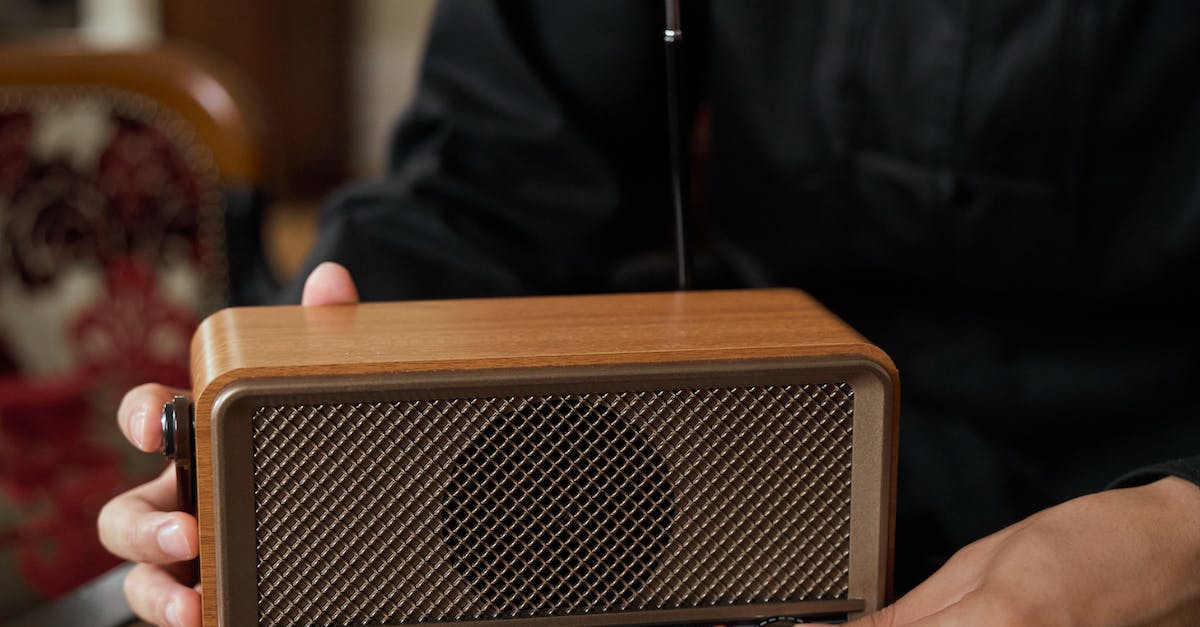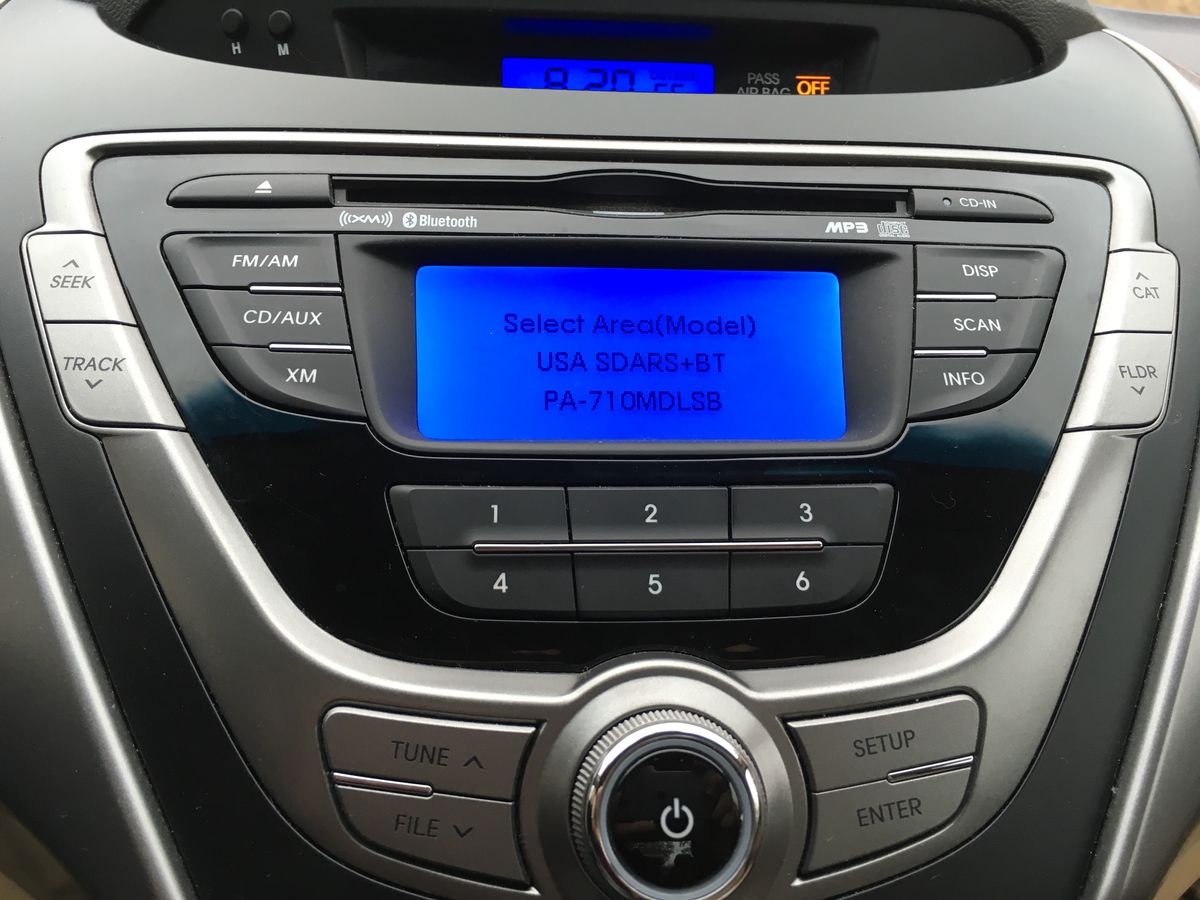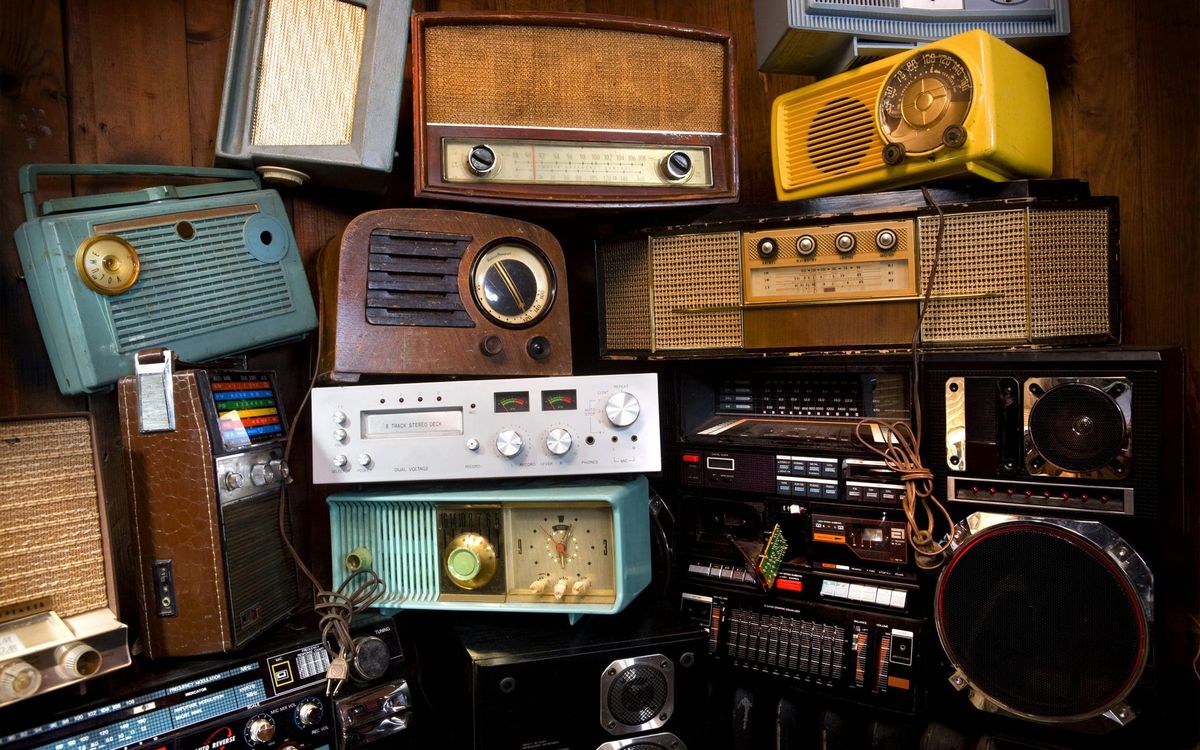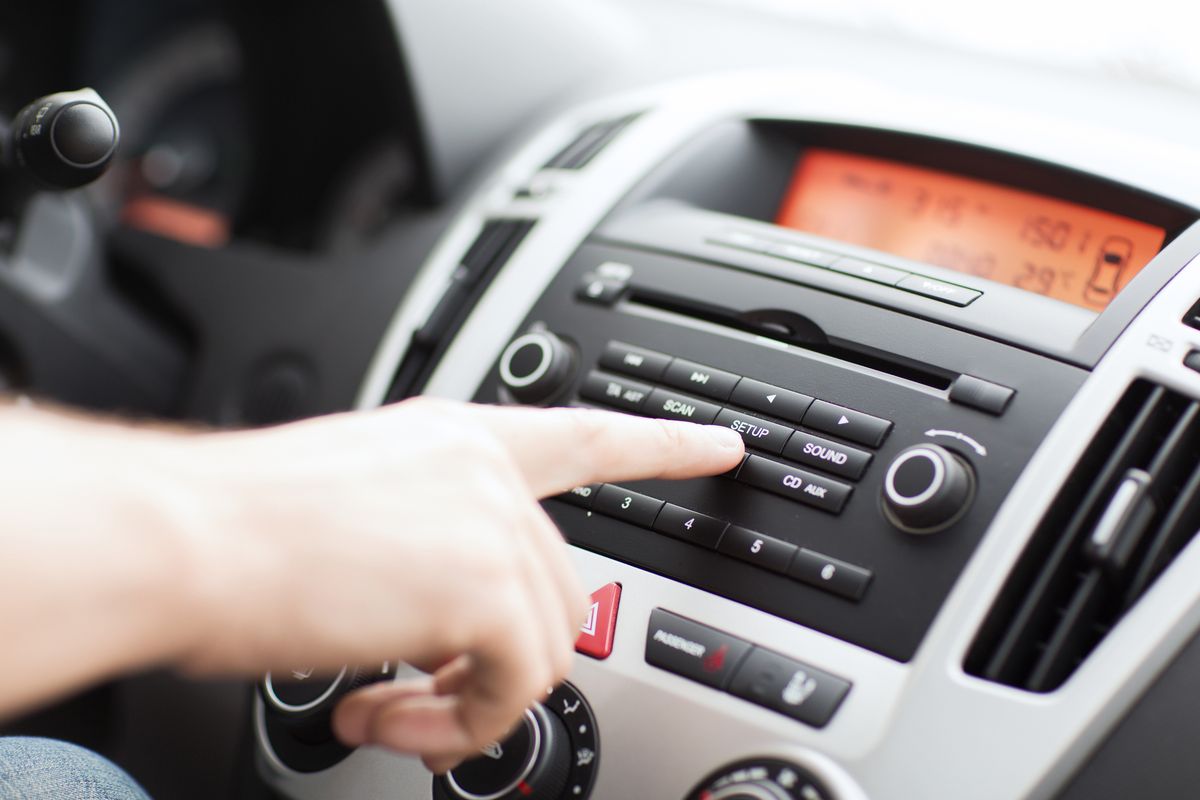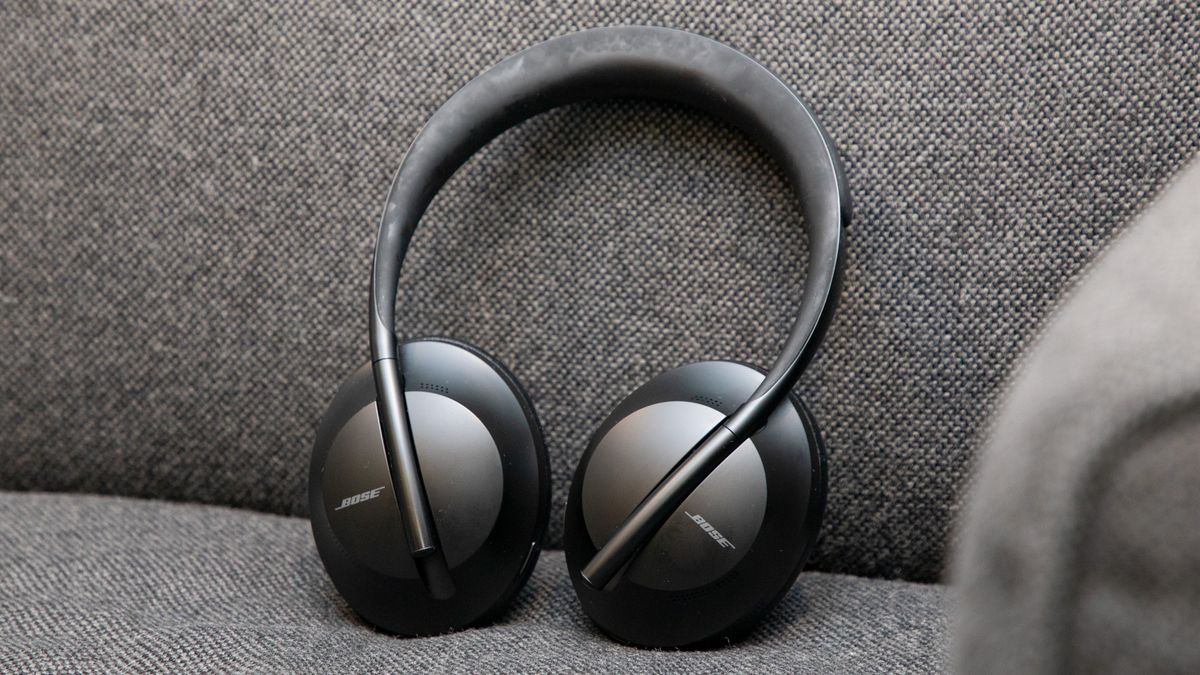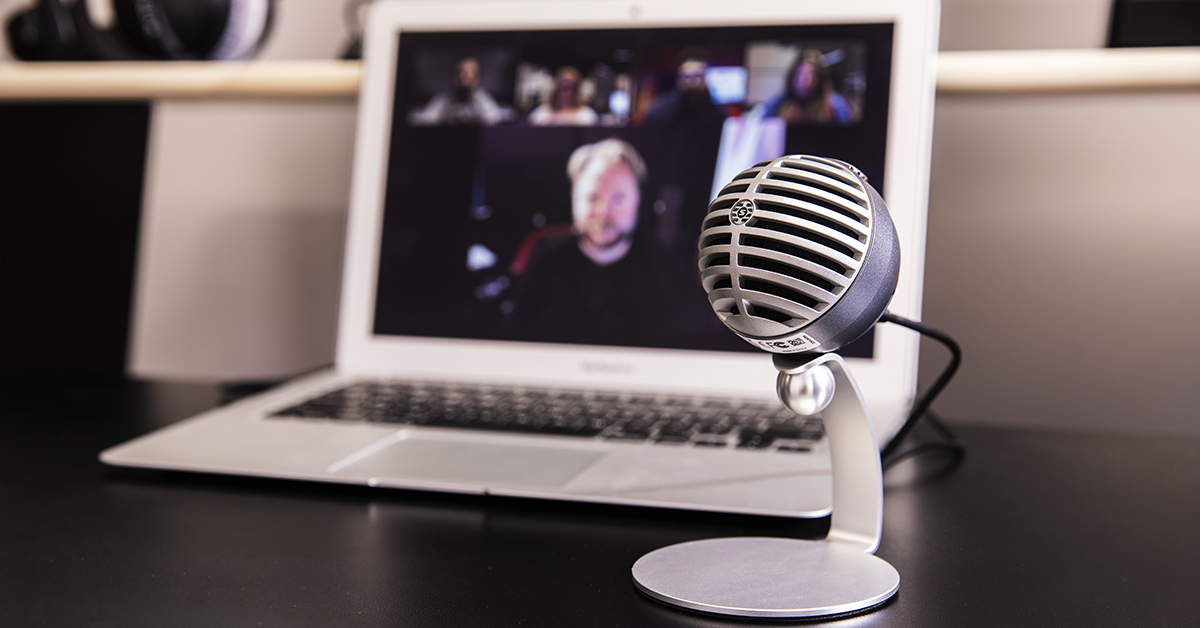Home>Devices & Equipment>Radio>Why Is My Radio Cutting In And Out
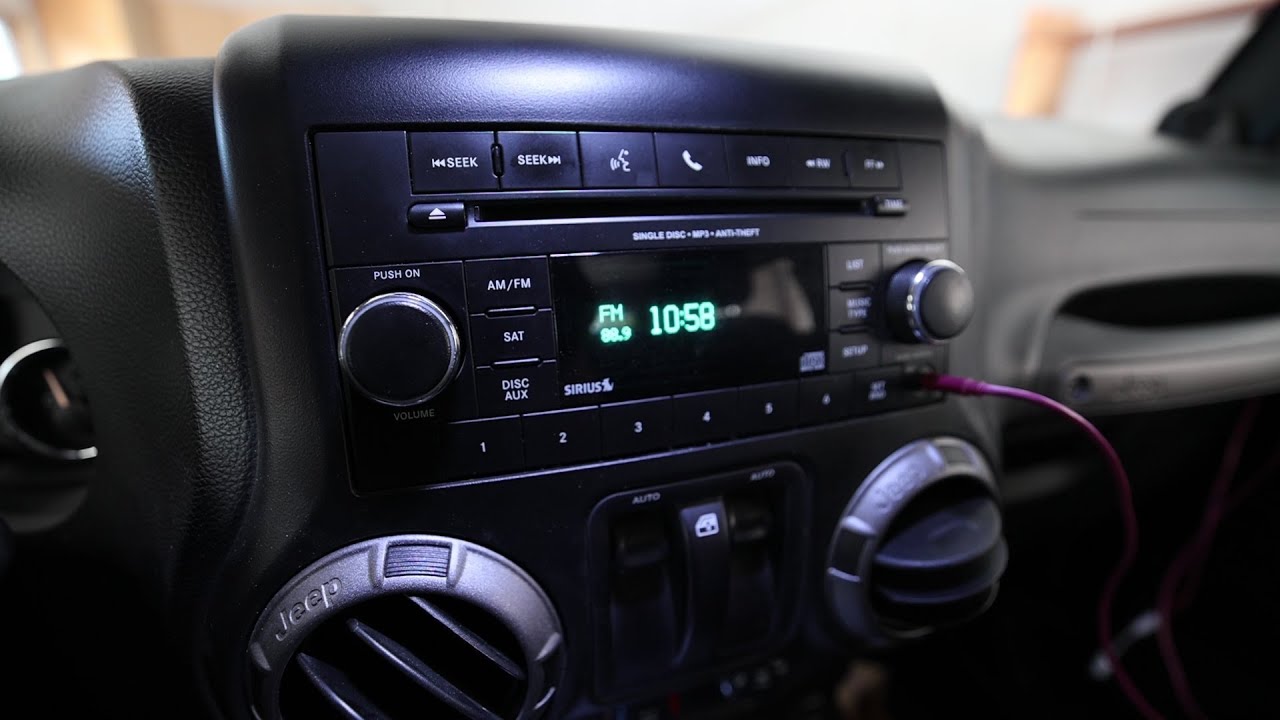

Radio
Why Is My Radio Cutting In And Out
Published: November 10, 2023
Experiencing radio signal interruptions? Discover why your radio is cutting in and out and find solutions to resolve this frustrating issue.
(Many of the links in this article redirect to a specific reviewed product. Your purchase of these products through affiliate links helps to generate commission for AudioLover.com, at no extra cost. Learn more)
Table of Contents
- Introduction
- Common Causes for Radio Cutting In and Out
- Weak Signal Strength
- Interference from Other Devices
- Radio Antenna Issues
- Electrical Interference
- Faulty Wiring or Connections
- Troubleshooting Steps for a Radio Cutting In and Out
- Check Signal Strength
- Move Away from Interfering Devices
- Inspect and Adjust the Radio Antenna
- Eliminate Electrical Interference
- Examine Wiring and Connections
- Conclusion
Introduction
Radio has been a beloved medium for entertainment and information for many decades. However, there may be times when you experience frustration with your radio cutting in and out. This can be a major buzzkill when you’re trying to enjoy your favorite tunes or catch up on the latest news.
The good news is that there are several common causes for radio reception issues, and in many cases, you can troubleshoot and resolve the problem on your own. By understanding the factors that can contribute to a radio cutting in and out, you can take the necessary steps to improve your listening experience.
In this article, we will explore the most common causes of radio cutting in and out and provide troubleshooting steps to help you resolve the issue. Whether you’re experiencing this problem with your car radio, portable radio, or home stereo system, the information shared here will be applicable.
Before we dive into the possible causes and solutions, it’s important to note that radio reception can be influenced by various external factors. These factors include the distance from the radio station, geographical terrain, weather conditions, and even the quality of your radio equipment.
While some radio reception issues may be outside of your control, many can be mitigated or eliminated with a little troubleshooting and know-how. So, let’s get started and get your radio back to providing uninterrupted and enjoyable listening experiences!
Common Causes for Radio Cutting In and Out
When your radio is cutting in and out, it can be frustrating and disruptive. Understanding the common causes of this issue can help you identify and address the problem effectively. Here are the primary factors that can cause your radio to cut in and out:
- Weak Signal Strength: One of the most common reasons for intermittent reception is a weak signal. This can occur when you are located far away from the radio station or if there are obstacles such as tall buildings or mountains interfering with the signal.
- Interference from Other Devices: Another common culprit for radio reception issues is interference from other electronic devices. Devices such as cordless phones, Wi-Fi routers, microwaves, and even fluorescent lights can emit electromagnetic waves that disrupt radio signals and cause static or cutting in and out.
- Radio Antenna Issues: A faulty or poorly positioned radio antenna can also lead to intermittent reception. If the antenna is damaged or not properly connected, it may not be able to capture a strong and steady signal from the radio station.
- Electrical Interference: In some cases, electrical interference within your home or vehicle can interfere with radio reception. This can be caused by faulty wiring, power lines, or even nearby electrical equipment. The electromagnetic interference from these sources can disrupt the radio signal and cause reception issues.
- Faulty Wiring or Connections: Faulty wiring or loose connections within your radio system can also contribute to a cutting in and out issue. If the wiring is damaged or the connections are not secure, it can lead to sporadic reception or loss of signal altogether.
These common causes can occur individually or in combination, making it important to consider each one when troubleshooting your radio reception problems. By addressing these issues, you can significantly improve the overall performance of your radio and enjoy uninterrupted listening experiences.
Weak Signal Strength
One of the primary reasons your radio may be cutting in and out is due to weak signal strength. This occurs when the radio station’s signal is not strong enough to reach your location effectively. Here are some factors that can contribute to weak signal strength:
- Distance from the radio station: The farther you are from the radio station, the weaker the signal will be when it reaches your radio. If you live in a rural area or a location far away from the nearest radio tower, you may experience weaker reception.
- Geographical terrain: Natural obstacles such as mountains, hills, or tall buildings can block or weaken radio signals. If you are located in an area with challenging terrain, it can affect the strength and consistency of your radio reception.
- Weather conditions: Certain weather conditions, such as heavy rain, thunderstorms, or atmospheric disturbances, can impact radio signal transmission. These conditions can cause signal interference, leading to intermittent reception or loss of signal.
- Quality of radio equipment: The quality and capabilities of your radio equipment can also affect signal strength. Higher-end radios generally have better reception capabilities, allowing them to pick up weaker signals more effectively than lower-end models.
If weak signal strength is the reason behind your radio cutting in and out, there are a few steps you can take to improve reception:
- Reposition your antenna: Adjust the position and direction of your radio antenna. Sometimes, simply repositioning the antenna can improve signal reception. Experiment with different orientations to find the best placement for optimal reception.
- Use an external antenna: If you are using an indoor antenna, consider switching to an external one. External antennas are typically more powerful and can capture a stronger signal, especially if you live in a remote area or experience significant signal interference.
- Upgrade your radio equipment: If you consistently struggle with weak signal strength, it may be worth investing in a higher-quality radio with better reception capabilities. Look for radios with features like built-in signal boosters or extended range antennas to enhance signal reception.
- Listen online or via streaming: If all else fails, consider listening to your favorite radio stations online or through streaming services. Many radio stations now offer live streaming options, allowing you to enjoy their content without worrying about weak signal reception.
By taking these steps, you can increase the chances of receiving a stronger and more stable signal, reducing the occurrence of your radio cutting in and out.
Interference from Other Devices
Another common cause of a radio cutting in and out is interference from other electronic devices. These devices emit electromagnetic waves that can disrupt the radio signal and result in static or intermittent reception. Here are some common culprits of interference:
- Cordless phones: Cordless phones operate on similar frequencies as some radio stations, which can cause interference. If you have a cordless phone near your radio, try moving it away or opt for a phone with a different frequency range.
- Wi-Fi routers: Wi-Fi routers emit signals in the 2.4GHz and 5GHz frequency bands, which can interfere with radio signals. Keep your radio away from your router or try changing the channel settings on your router to minimize interference.
- Microwaves: Microwaves produce electromagnetic waves that can disrupt radio signals. Avoid placing your radio near a microwave or switch to a different location to minimize interference.
- Fluorescent lights: Some types of fluorescent lights emit electromagnetic waves that can interfere with radio reception. If possible, avoid placing your radio close to fluorescent lights or switch to LED lights, which have a lower chance of interfering with radio signals.
To minimize interference from other devices and improve your radio reception, follow these steps:
- Move away from interfering devices: If you notice that your radio cuts out when certain devices are in close proximity, try moving your radio away from them. Increasing the distance between your radio and the interfering devices can help reduce signal disruption.
- Use shielding methods: If moving away from interfering devices is not possible, consider shielding your radio from their electromagnetic waves. You can use specialized shielding materials or even aluminum foil to create a barrier between your radio and the interfering device.
- Try a different frequency or channel: In some cases, changing the frequency or channel on your radio can help mitigate interference. Consult your radio’s manual for instructions on how to switch frequencies or channels.
- Upgrade your equipment: If you consistently experience interference from other devices, consider upgrading your radio equipment. Look for radios that have built-in shielding or advanced filtering capabilities to minimize interference from external sources.
By taking these steps to reduce interference from other devices, you can improve the overall stability and quality of your radio reception, minimizing the frustrating issue of your radio cutting in and out.
Radio Antenna Issues
A faulty or improperly positioned radio antenna can also contribute to a radio cutting in and out. The antenna is responsible for capturing and receiving the radio signal, so any issues with it can result in poor reception. Here are some antenna-related problems that can cause intermittent reception:
- Damaged antenna: If your antenna is damaged, such as with a broken wire or bent elements, it may not be able to effectively capture the radio signal. Inspect the antenna for any visible signs of damage and replace it if necessary.
- Poor antenna connection: A loose or faulty connection between the antenna and the radio can lead to reception issues. Ensure that the antenna is securely connected to the radio, and check for any loose or corroded connectors that may need cleaning or replacement.
- Inadequate antenna positioning: The position and orientation of the antenna can significantly affect signal reception. If the antenna is not properly aligned, it may receive a weaker signal or pick up interference from other sources. Adjust the antenna’s position, considering factors like the direction of the radio station or any obstacles blocking the signal.
- Incompatible antenna: Some radios have specific antenna requirements, such as certain lengths or types. Using an incompatible antenna can result in poor reception or no reception at all. Make sure to use an antenna that is compatible with your radio model.
To address radio antenna issues and improve reception, follow these troubleshooting steps:
- Inspect the antenna: Check the antenna for any signs of damage or wear. If it is damaged, consider replacing it with a new one to ensure optimal reception.
- Clean and secure connections: Ensure that the antenna is securely connected to the radio, and clean any dirty or corroded connectors. A clean and tight connection can help improve signal reception.
- Adjust antenna positioning: Experiment with different positions and orientations for the antenna. Rotate or reposition it to find the sweet spot that provides the best reception. Consider using a signal strength meter or signal indicator feature on your radio to help you identify the optimal position.
- Consider an external antenna: If you are still experiencing reception issues, especially in areas with weak signals, consider using an external antenna. These antennas are often more powerful and can provide better reception compared to built-in or telescopic antennas.
By addressing and resolving radio antenna issues, you can improve signal reception and minimize the occurrence of your radio cutting in and out.
Electrical Interference
Electrical interference can be a major culprit behind a radio cutting in and out. Various electrical sources in your surroundings can emit electromagnetic waves that disrupt the radio signal, leading to poor reception quality. Here are some common causes of electrical interference:
- Faulty wiring: Faulty or damaged electrical wiring in your home or vehicle can emit electromagnetic interference that affects radio reception. If you suspect faulty wiring, it’s crucial to have it inspected and repaired by a professional electrician.
- Power lines: Proximity to power lines can cause electrical interference. If you live near high-voltage power lines, the electromagnetic fields they generate can disrupt radio signals. Moving away from these power lines may help alleviate interference.
- Other electronic equipment: Certain electronic devices and appliances can generate electrical noise that interferes with radio signals. Examples include fluorescent lights, televisions, computer monitors, and power supplies. Keeping your radio away from these devices can help minimize interference.
To reduce electrical interference and improve radio reception, consider the following steps:
- Reposition your radio: Move your radio away from sources of electrical interference. Ensure that it is placed at a reasonable distance from devices like power supplies, TVs, and other electronic equipment that may emit electromagnetic interference.
- Use a power conditioner or surge protector: Employing a power conditioner or surge protector can help filter out electrical interference and provide cleaner power to your radio. This can enhance reception quality by reducing the impact of electrical noise.
- Ground your radio: Grounding your radio can help dissipate any unwanted electrical signals and reduce interference. Consult the user manual or manufacturer’s guidelines for instructions on how to properly ground your radio.
- Check your electrical system: If you suspect that faulty wiring or power lines are causing interference, consult with a qualified electrician to inspect and rectify any electrical issues in your home or vehicle.
By addressing and minimizing electrical interference, you can improve reception quality and reduce instances of your radio cutting in and out.
Faulty Wiring or Connections
Faulty wiring or connections within your radio system can also contribute to a radio cutting in and out. If the wiring or connections are damaged, loose, or not properly installed, it can result in intermittent reception or even complete signal loss. Here are some common issues related to faulty wiring or connections:
- Loose connections: Loose connections between the radio and the antenna, or between different components of your radio system, can cause signal interruptions. Check all connections and ensure they are secure and properly tightened.
- Damaged wiring: Frayed or damaged wiring can disrupt the flow of the radio signal, leading to reception issues. Inspect the wiring and look for any signs of wear, cuts, or damage. Replace any damaged wiring to restore optimal signal flow.
- Poorly insulated wires: Inadequate insulation on the wiring can result in interference from other electrical sources, compromising radio reception. Make sure all wiring is properly insulated and away from potential sources of electrical interference.
- Incompatible components: Using incompatible or mismatched components within your radio system can lead to poor performance and intermittent reception. Ensure that all components of your radio system are compatible and designed to work together seamlessly.
To troubleshoot and resolve faulty wiring or connection issues, follow these steps:
- Inspect all connections: Check all connections within your radio system, including the antenna connection, audio cables, and power cables. Ensure that they are securely plugged in and tightly connected.
- Replace damaged wiring: If you find any damaged or frayed wiring, replace them with new wires of the appropriate gauge and length. Opt for high-quality wiring to ensure optimal signal transfer and minimize interference.
- Properly insulate wires: Ensure that all wiring is properly insulated, especially if they are located near potential sources of electrical interference. Use heat shrink tubing or electrical tape to insulate the exposed areas of the wiring.
- Double-check compatibility: Verify that all components of your radio system are compatible and designed to work together. If you suspect any incompatibility issues, consult the user manuals or contact the manufacturer for guidance.
By resolving faulty wiring or connection issues, you can restore the proper functionality of your radio system and prevent it from cutting in and out.
Troubleshooting Steps for a Radio Cutting In and Out
If you are experiencing the frustrating issue of your radio cutting in and out, here are some troubleshooting steps you can take to identify and resolve the problem:
- Check signal strength: Start by checking the signal strength of the radio station. Tune in to different stations and observe if the issue persists across multiple frequencies. If the problem is specific to one station, it could indicate a weak signal or station-specific interference.
- Move away from interfering devices: Identify any electronic devices or appliances in close proximity to your radio that may be causing interference. Try moving away from or turning off these devices to see if it improves reception.
- Inspect and adjust the radio antenna: Examine the condition and positioning of your radio antenna. Ensure that it is securely connected and adjust its position or orientation to find the best reception. Consider upgrading to an external antenna for better performance.
- Eliminate electrical interference: Minimize sources of electrical interference by keeping your radio away from devices like cordless phones, Wi-Fi routers, microwaves, and fluorescent lights. Use shielding methods or consider upgrading your equipment to reduce interference.
- Examine wiring and connections: Thoroughly inspect the wiring and connections within your radio system. Look for any loose connections, damaged wiring, or incompatible components. Rectify any issues by tightening connections, replacing damaged wiring, or ensuring compatibility.
It is important to note that troubleshooting steps may vary depending on the type of radio and the environment in which it is used. Always refer to the manufacturer’s guidelines and consult professional assistance if needed.
Remember to test your radio after each troubleshooting step to determine the impact of the changes. By following these steps, you can identify and address the underlying causes of your radio cutting in and out, ultimately improving your listening experience.
Check Signal Strength
One of the first troubleshooting steps to take when your radio is cutting in and out is to check the signal strength. Weak signal reception can result in intermittent or poor-quality audio. Here’s how you can assess the signal strength:
- Tune in to different stations: Test your radio by tuning in to various stations across different frequencies. If the issue is only present on a specific station, it may indicate a weak signal from that particular broadcast source.
- Observe the signal indicator: Many radios feature a signal strength indicator, which displays bars, numbers, or symbols to indicate the current signal strength. Keep an eye on the indicator while adjusting the antenna or repositioning the radio to see if it improves reception.
- Consider external factors: Factors such as distance from the broadcasting tower, geographical terrain, weather conditions, and the quality of your radio equipment can influence signal strength. If you live in a remote area or an environment with obstacles like mountains or tall buildings, it’s likely that the signal strength may be weaker.
If you find that the signal strength is weak, here are some steps you can take to improve it:
- Reposition your radio: Adjust the position of your radio in the room or space. Try placing it near a window, as outdoor exposure can improve signal reception. Experiment with different locations to find the optimal spot.
- Move to an open space: If you are using a portable radio, step outside or move to an open area where there are fewer obstructions. This can help enhance the reception and overcome signal attenuation caused by buildings or objects.
- Upgrade your antenna: Consider upgrading to a higher-quality or external antenna. External antennas tend to have greater range and reception capabilities, allowing them to capture stronger signals and improve overall reception quality.
- Listen online: If all else fails, consider streaming radio stations online. Many radio stations now offer live streaming options through their websites or dedicated apps. This way, you can bypass signal strength limitations and enjoy uninterrupted listening.
By checking the signal strength and taking appropriate measures, you can improve reception and reduce or eliminate the issue of your radio cutting in and out.
Move Away from Interfering Devices
Interference from other electronic devices can often be the cause of a radio cutting in and out. Electronic devices emit electromagnetic waves that can disrupt the radio signal, leading to static or intermittent reception. Here’s how you can address this issue:
- Identify potential interfering devices: Take note of any electronic devices or appliances near your radio that may be causing interference. These can include cordless phones, Wi-Fi routers, microwaves, televisions, and even fluorescent lights.
- Assess the proximity: Determine the distance between your radio and the interfering devices. The closer your radio is to them, the higher the likelihood of interference. Aim to create some distance between the radio and these devices.
- Move away from interfering devices: Try moving your radio to a different location away from the interfering devices. Even a few feet can make a significant difference in reducing interference and improving reception.
- Experiment with placement: If moving the radio away from interfering devices is not feasible, experiment with different placements. Adjust the orientation or position of the radio to find the optimal spot with minimal interference.
- Upgrade to wireless devices: Consider replacing cordless phones or other wireless devices that operate in the same frequency range as your radio. Opt for devices that use different frequency bands to prevent interference.
- Use shielding methods: If you can’t move your radio away from interfering devices, consider using shielding methods to minimize interference. Shielding materials or aluminum foil can be used to create a physical barrier between the radio and the interfering device, reducing the impact of electromagnetic waves.
By moving away from or minimizing the influence of interfering devices, you can significantly improve the reception quality of your radio. Remember to experiment with different placements and shielding techniques to find the best solution for your specific environment.
Inspect and Adjust the Radio Antenna
A faulty or improperly positioned radio antenna can cause poor reception and result in a radio cutting in and out. Checking and adjusting the antenna can help improve the overall signal strength and stability. Here’s what you can do:
- Inspect the antenna: Take a close look at the condition of your radio antenna. Look for any visible damage, such as bent elements, corrosion, or loose connections. If you notice any issues, consider replacing the antenna for improved performance.
- Ensure a proper connection: Make sure that the antenna is securely and properly connected to the radio. Check that all connectors are tight and not corroded. A loose or poorly connected antenna can result in a weak or intermittent signal.
- Position and orient the antenna: The position and orientation of the antenna can significantly impact signal reception. For telescopic antennas, fully extend them to their maximum length for better reception. Experiment with different angles and orientations to find the optimum position.
- Consider an external antenna: If you’re using an indoor antenna and experiencing persistent reception issues, consider upgrading to an external antenna. External antennas are typically more powerful and designed to capture signals more effectively, especially in areas with weak signal strength or interference.
- Use signal indicators: Many radios have signal indicators that display the strength of the received signal. Use these indicators as guides when adjusting the antenna. Look for the position that provides the strongest and most stable signal.
By inspecting and adjusting the radio antenna, you can improve signal reception and reduce the occurrence of your radio cutting in and out. Remember to regularly check the antenna for any damage or loose connections to ensure optimal performance.
Eliminate Electrical Interference
Electrical interference is a common culprit when it comes to radio cutting in and out. Various electrical sources in your vicinity can emit electromagnetic waves that disrupt the radio signal, resulting in poor reception. Here’s how you can minimize or eliminate electrical interference:
- Identify potential sources of interference: Take note of any electrical devices or equipment in close proximity to your radio that may be causing interference. These can include faulty wiring, power lines, fluorescent lights, televisions, and other electronic devices.
- Address faulty wiring: Faulty or damaged wiring within your home or vehicle can emit electromagnetic interference. If you suspect faulty wiring, have it inspected and repaired by a professional electrician to ensure it is in proper working order.
- Distance yourself from power lines: Proximity to high-voltage power lines can result in electrical interference. If you live near power lines, try moving your radio away from them or repositioning it to a location where interference is minimal.
- Keep away from other electronic devices: Place your radio away from other electronic devices that can generate electromagnetic noise, such as fluorescent lights, televisions, and computer monitors. Create distance between your radio and these devices to reduce the impact of electrical interference.
- Use power conditioners or surge protectors: Utilize power conditioners or surge protectors with built-in noise filtering capabilities. These devices help clean the power supply to your radio, reducing electrical noise and interference.
- Ground your radio: Grounding your radio can help dissipate unwanted electrical signals and reduce interference. Consult the user manual or manufacturer’s guidelines for proper grounding procedures specific to your radio model.
By minimizing electrical interference, you can improve the overall reception quality of your radio and reduce instances of it cutting in and out. Remember, addressing faulty wiring and keeping your radio away from potential sources of interference are crucial steps in eliminating electrical interference and optimizing your listening experience.
Examine Wiring and Connections
Faulty wiring or connections within your radio system can contribute to a radio cutting in and out. Poorly installed or damaged wiring can disrupt the flow of the radio signal, resulting in intermittent reception or signal loss altogether. To address this issue, it’s important to examine the wiring and connections of your radio system. Here’s what you can do:
- Inspect connections: Check all connections within your radio system, including the antenna connection, audio cables, and power cables. Ensure that each connection is secure, properly tightened, and free from any corrosion or debris.
- Tighten loose connections: If you discover any loose connections, tighten them carefully with the appropriate tools. Loose connections can cause a weak signal or complete signal loss, resulting in intermittent reception. Ensure all connections are snug and secure.
- Replace damaged wiring: Inspect the wiring for any signs of damage, such as fraying, cuts, or exposed wires. Damaged wiring can disrupt the flow of the radio signal and negatively impact reception quality. If you find any damaged wiring, replace it with new wires of the appropriate gauge and length.
- Check for compatibility: Ensure that all components of your radio system are compatible with each other. Mismatched components or incompatible wiring can cause poor performance and intermittent reception. Consult the user manuals or contact the manufacturer for information on compatibility.
- Avoid wire clutter: Keep your wiring organized and avoid excessive clutter that can lead to tangling or accidental disconnections. Neat and well-organized wiring not only improves the aesthetics but also minimizes the chances of loose connections or accidental damage.
Regularly examining your wiring and connections helps maintain optimal signal flow and reduces the chances of a radio cutting in and out. By ensuring secure and proper connections, as well as replacing any damaged wiring, you can improve the overall stability and quality of your radio reception.
Conclusion
Experiencing a radio cutting in and out can be frustrating, but the good news is that there are several common causes for this issue, and troubleshooting can often resolve the problem. By understanding the potential reasons behind the intermittent reception, you can take the necessary steps to improve your listening experience.
We have covered common causes of a radio cutting in and out, including weak signal strength, interference from other devices, radio antenna issues, electrical interference, and faulty wiring or connections. By addressing these factors, you can minimize or eliminate the occurrence of your radio cutting in and out.
When troubleshooting, it’s crucial to check the signal strength, move away from interfering devices, inspect and adjust the radio antenna, eliminate electrical interference, and examine the wiring and connections within your radio system. These steps can significantly improve reception quality and reduce the interruptions you experience.
Remember, radio reception can also be influenced by external factors beyond your control, such as distance from the radio station, geographical terrain, and weather conditions. However, by following the troubleshooting steps outlined in this article, you can mitigate the impact of these factors and optimize your radio listening experience.
If you continue to experience issues with your radio cutting in and out after attempting the troubleshooting steps, it may be beneficial to consult a professional or contact the manufacturer for further assistance. They can provide additional guidance and support in resolving persistent reception problems.
Now that you have a better understanding of the common causes and troubleshooting steps, you can enjoy uninterrupted radio listening and get back to enjoying your favorite music or staying informed with the latest news and updates.

